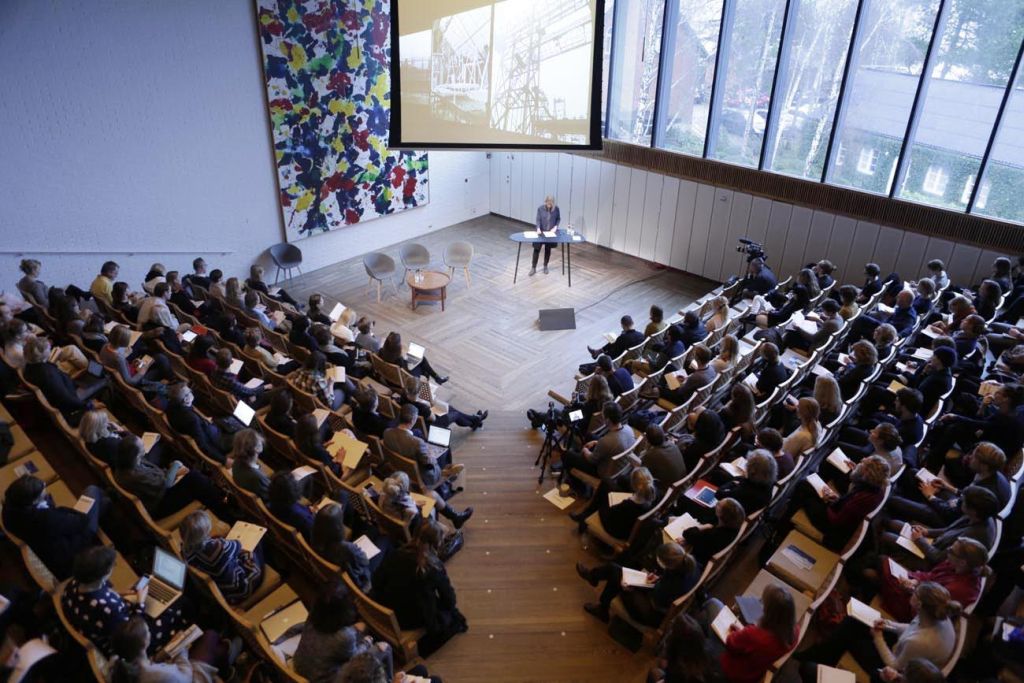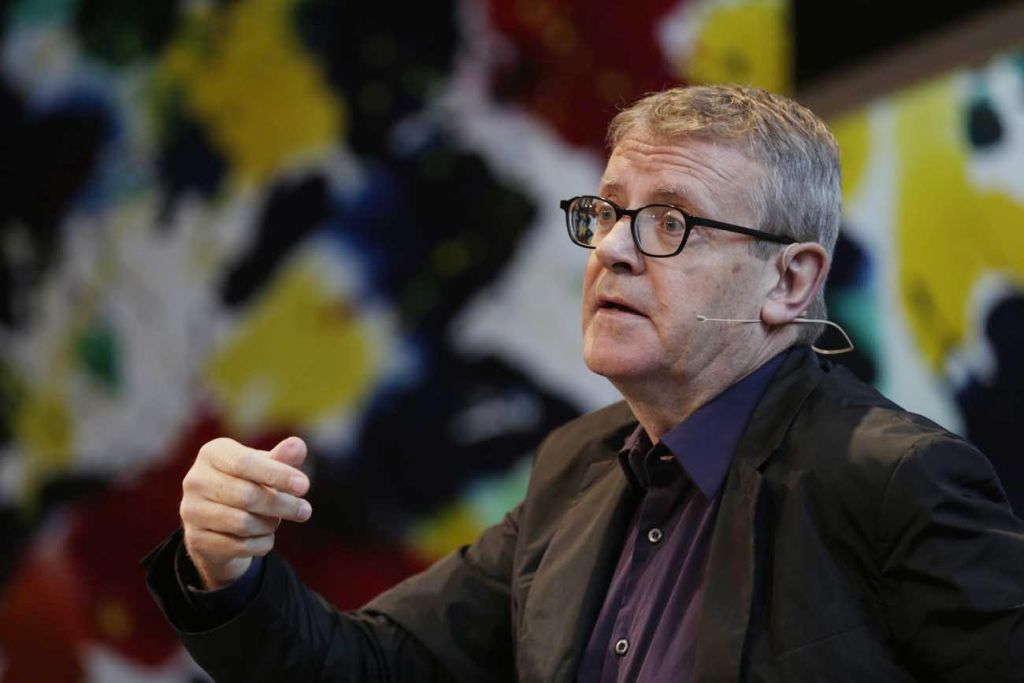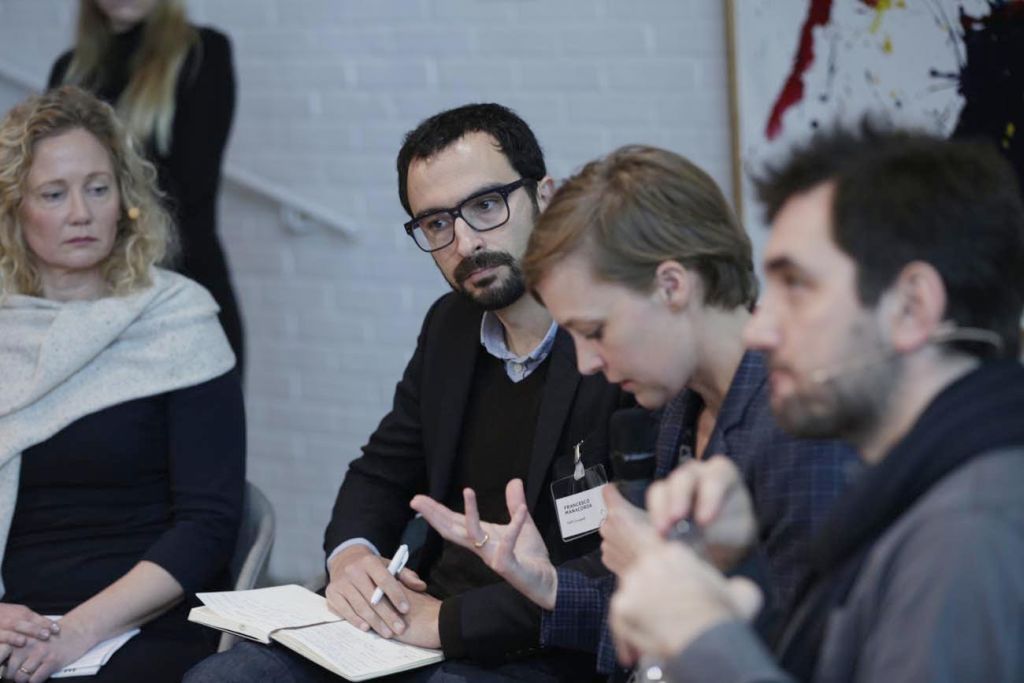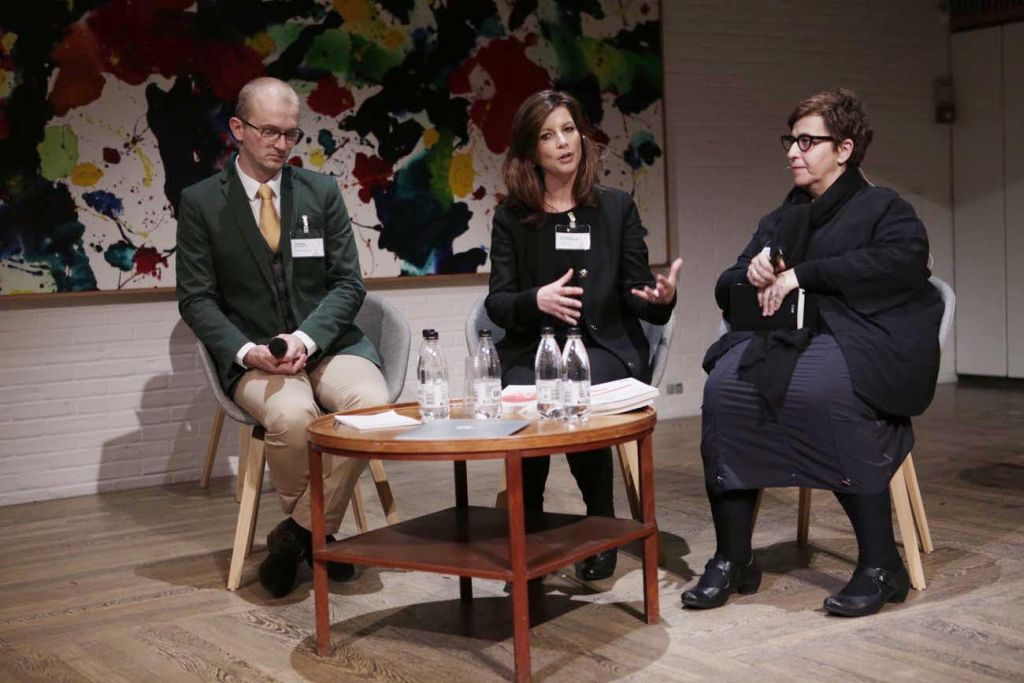
Between the Discursive and the Immersive A Symposium on Research in 21st century Art Museums

While many museums have been investing in more spectacular displays to stimulate the experience of art, they are also seen as places for research in art and knowlegde production. Which way to go?
Organised by the Stedelijk Museum, Aarhus University as well as the Louisiana Museum of Modern Art and hosted amidst the impressive scenery of the latter, the symposium ‘Between the DISCURSIVE and the IMMERSIVE’ was held on the 3rd and 4th of December 2015 in Humlebæk, Denmark.
The international panel of speakers, amongst them Francesco Manacorda, Director, TATE Liverpool; Anselm Franke, Head of Visual Arts and Film, Haus der Kulturen der Welt; Mark Wigley, Dean at Columbia University; Emily Pringle, Head of Learning Practice and Research at Tate, London; Yuval Etgar, The Ruskin School of Art, University of Oxford; Jeroen Boomgaard, Gerrit Rietveld Academie, and Hendrik Folkerts, Curator of documenta 14 attempted to delineate research and its meaning, formats and methods in the 21st century art museum dealing with questions such as: the qualities of discursive and immersive exhibitions, new forms of interaction between the museum and its audience and research as an emergent artistic and curatorial tool.
The term discursive was used for research-based activities within the museum and its growing role and autonomous position in modern and contemporary art, no longer restricted to the support of exhibitions and the collection, whereas the immersive referred to the creation of spectacular displays, designed to offer the audience and unique, multisensory experiential model of curating.
While most of the keynote speakers introduced a diverse and captivating range of arguments exploring the theoretical implications of research-based museums, the Pecha Kucha style presentations about concrete projects and practices did not live up to the metaphysical scenarios proposed beforehand. Despite their rather limited – predominantly White and Western – sociocultural background, the international speakers covered a wide range of positions within the art-world such as directors, researchers, curators, artists, PhD candidates, scholars and one architect.


‘What happens when your phone brings you to the museum?’ – scrutinises Mark Wigley among many other things in his rich keynote speech. Moreover, he argues that the museum no longer addresses mere human beings, it rather deals with active users giving up consumption in favor of knowledge production. This argument explicitly characterises the oscillation between the discursive and the immersive and implies other relevant issues that were brought up at the conference.
For instance, the discussion revolved around the concept of the audience as a co-author of the museum’s programme, ranging from Francesco Manacorda’s idea of a museum that evolves from a learning machine to a cybernetic learning tool, which simultaneously produces knowledge and learns from the public to Emily Pringle’s invitation to elaborate programs together with the audience, reflecting on their versatile interests and needs.
Nowadays bidirectional activity seems to be a key component of art-institution-thinking. This idea is attuned to Boris Groys’s assertion of the democratization of art production, accessible to everyone due to the digital revolution. Thus, this modus operandi proposes users to intervene and adopt much more proactive patterns of visitor behavior inside the museum.

The core topic of research and its applicability in the arts, was addressed a number of times from different angles and perspectives. It is notable that research activity, previously reserved only for the scholars in their cluttered, dusty sanctums, suddenly turned into a lifesaver, a fluid medium, a beneficial strategy and even a mode of survival – according to Emily Pringle – for the art world. In this manner a peripheral, supplementary tool usually setting the stage for the project turned into the core of the latter overnight.
A line of reasoning that can also be found in Anselm Franke’s lecture, wherein he states that the exhibition – the way we know it – may become obsolete, and proposes to open an exhibition at the starting point of a research project. Leaving the question of how the unknown can be produced and how it can relate to the public unanswered, nonetheless raising awareness for our positivist culture and prevalent triumphal representation of it in museums, thereby pointing out the importance of sharing in order to avoid the tendency towards hermeticism in research.
To conclude, Wigley draws a rather dark picture of museums in the future, one where the artwork is almost of no importance, coinciding on the one hand with Jeroen Boomgaard’s observation that artworks have become mere illustrations to research practice and on the other with Victoria Walsh’s premise that today’s artworks have entered an image economy and therefore the institutional critique as we know it, operating in an analogue museum, has become outdated and our actions within this model limited. Furthermore, Walsh elaborates that when art entered academia and therefore research as well as the knowledge economy, it assumed its role and responsibility to society – again a hint towards the prevalence of a utilitarian model of art in the museum?
At the end of the day, it appears to be not that important to draw an exact demarcation line between the immersive and the discursive since research exhibitions tend to be immersive and immersive exhibitions always try to make a discursive point, too, but both simply want to engage their audiences. In this respect the conference’s task was to sketch the complex, all-encompassing model of the 21st century art museum and its relation to research, which of course cannot be described as anything else but a mere attempt, nonetheless a very rich and thought-provoking one.
The authors are participants of this years de Appel CP
between the discursive and the immersive
Louisiana Humlebæk, Denmark (icw Stedelijk Museum Amsterdam)
3.12 t/m 4.12.2015
Laura Amann & Kateryna Filyuk


